Needless to say, in recent years, marketing in the digital field such as SEM and SNS marketing has become popular.
However, there is data that only 22% of customers are satisfied with such digital retail.
When selling via the Internet, it is difficult for the clerk to answer questions from customers in real time. If it takes a long time to answer, customer satisfaction will decrease proportionally.
Therefore, in this article, I will explain the marketing method called “conversation marketing”. If you want to communicate quickly with your customers online, please refer to it.
Table of Contents
Table of contents
- What is Conversational Marketing?
- Conversation marketing recreates “connections with people” in physical stores
- Service examples using conversation marketing
- The future of conversational marketing
- In conclusion
What is Conversational Marketing?
Future marketing that shines in the personalized era
“Conversational marketing” is a marketing method in which a company and a customer have a dialogue about products/services through live chat and chatbots.
The products and services that consumers are looking for are changing at a dizzying pace every day. Therefore, it doesn’t make much sense to devise a strategy that will produce results in a year or two. Therefore, it is necessary to catch the current trends of consumers and think about what is needed six months after that.
In recent years, a method called conversational marketing has been attracting attention because it is necessary to have continuous conversations with customers in order to grasp such trends.
Join All in one website/app messenger support for free

The three elements that makeup conversation marketing are:
- Personalized service
- Quick response
- Self-service support
From here, we will explain each element with reference to the data.
Personalized service
Personalized services are created by optimizing services to suit the tastes and behaviors of our customers. One example is a service that shows “Click here for recommended products for you” based on the purchase history so far.
But “personalized services” are by no means sophisticated and complex.
According to a OneSpot survey, 78% of marketers have adopted a basic personalization strategy, such as “include the customer’s first name in the email.”
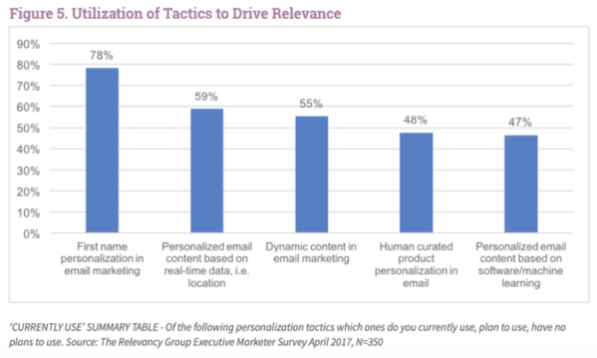
So why is customer satisfaction in digital retail as low as mentioned at the beginning?
That’s because many brands think “there’s nothing wrong with their personalization.”
Take a look at the graph below. As many as 80% of CEOs feel that their products/services are highly satisfying to their customers. On the other hand, 8% of customers are actually very satisfied.
Services that a company claims to be personalized are not personalized at all from the customer’s perspective, which reduces customer satisfaction.

Conversely, focusing on personalization can be very profitable.
The graph below shows what a customer would do if they offered personalized service.
44% of customers say they “buy the item/service again” and 39% say they “recommend the item/service to their parents or friends”.
If you pursue personalized service, you will find that it will be highly effective even after it is sold.
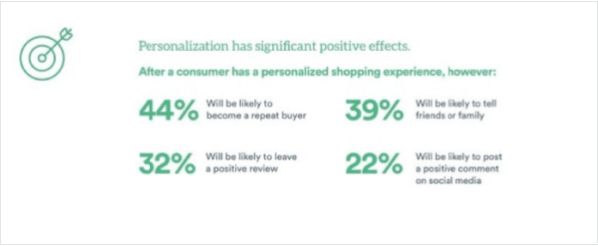
Quick response
In this era, no matter what you do, you need to be quick. Many people find it painful to wait 10 minutes, let alone 24 hours, to answer a simple question.
More than 30% of modern customers expect to receive a response within 30 minutes when they contact a company via SNS. Lack of speed is a life-and-death problem, as evidenced by the fact that it is the most frequently mentioned customer service issue.
The graph below shows the key factors to improve the customer experience. You can see that 75% of customers want a quick response.
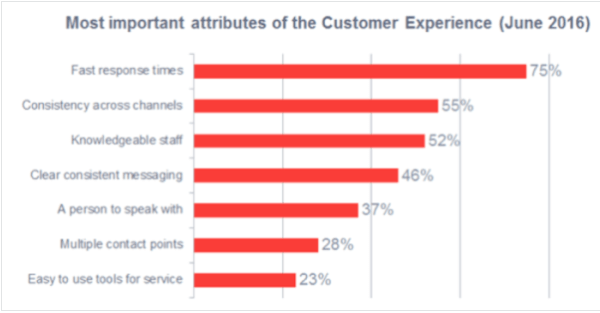
There is also data that dissatisfied customers will complain about their products and services to about 15 people. Nowadays, word-of-mouth is important, so it is important not to create customers who are dissatisfied with the slow response.
Self-service support
In the process of purchasing goods and services online, customers have a lot of questions. In such a situation, the customer does not bother to send an email or make a phone call to the operator.
With the Internet today, customers want to solve their problems themselves as much as possible. In fact, if you have any doubts about a product or service, 73% say “look it up on the Internet.”

When customers use the Internet to search for products and services, FAQ pages, YouTube videos, and information that comes out when searching are useful.
On the other hand, if a solution like the one mentioned above cannot be provided to a customer, the customer’s willingness to purchase may be discouraged.
To prevent this from happening, enrich the content so that customers can get information on their own.
Conversation marketing recreates “connections with people” in physical stores
Although the digital marketing epidemic and the COVID-19 epidemic from the end of 2021 are gradually making it online, most retail transactions are still in-store.
This is due to the demand for conversation and support with sales staff.

There is also data that about 90% of customers are more motivated to buy if there is someone who can help them buy one-on-one. Customers want an experience that connects them, not the end-of-market shopping.
Previously, it was considered impossible to provide such an experience over digital channels. But the evolution of technology is gradually breaking through this situation. In particular, the growth of live chat and chatbots helped solve the problem.
Allow companies of all sizes to provide 24-hour, personalized, one-to-one support to all their customers. In this era, the time lag for customers to get answers has been reduced to just a few seconds, enabling real-time dialogue between customers and businesses.
This conversational marketing approach has transformed traditional one-way marketing channels such as websites, sales pages, and social networks into a two-way dialogue.
Service examples using conversation marketing
As an example of B2B conversation marketing, let’s take the case of Drift.
Chatbots are asking questions such as “What purpose do you want to use the service for?” And “How many employees do you have?” We collect customer data and provide more personalized services.

This makes it possible to replace a multi-channel multi-step process with a 3-minute chat.
With conversation marketing, customers get:
- A personalized experience based on your own answers
- Real-time communication that solves problems in minutes
- Self-service support where you can collect information yourself
- Conversation marketing can provide customers with a higher level of service, regardless of industry or size.
The future of conversational marketing
Conversation marketing techniques such as live chat and chatbots are already playing an important role in customer support, even though they haven’t been around for a long time.
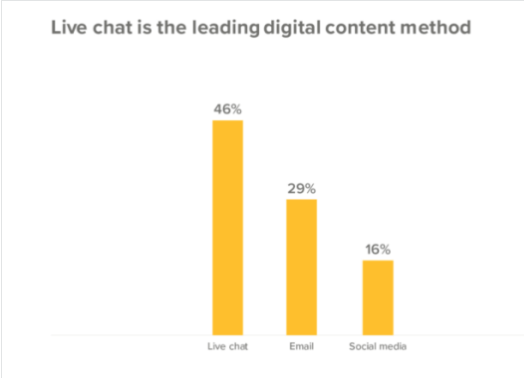
In fact, the Facebook Messenger app, which allows you to exchange messages in real-time, has 1.3 billion users, and WhatsApp has more than 1.6 billion users.
It’s self-evident that these methods of communication are preferred by modern customers, and that companies are adequately reflecting their needs.
And many companies are aware of this trend of customers, with live chat usage increasing by 400% between 2015 and 2022.
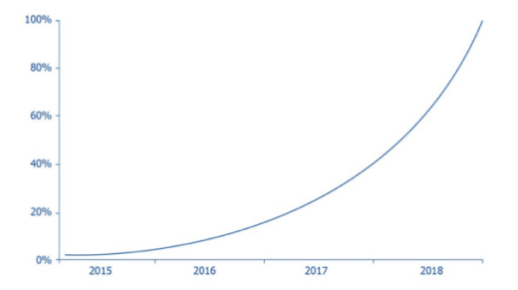
Driven by incredible engagement and conversion rates, usage is still on the rise. This tendency is also reflected in the following examples.
- [Tradeshift] Sales opportunities increased by 32% after switching to live chat
- [Vodafone] Conversion rate doubled after implementing chatbot
- [Marvel] Conversation checkout brings conversion rate to 58% (average social conversion rate is about 1%) Marvel has achieved the above results by actually using Jumper.ai, a conversational commerce platform.
In addition, Jumper.ai co-founder Niha Shree said of conversation marketing:
“Conversational marketing is intuitive and streamlined. It fits seamlessly into the channels your customers are involved in and organizes your buying channels. Customers want it with just a few clicks and taps. You can get things. “
Conversation marketing is future marketing. Even in digital channels, which tend to be one-way streets, it enables dialogue like a physical store.
The sooner you implement conversational marketing, the more conversions you should have.
In conclusion
Conversational marketing solutions, approaches, strategies, and tactics are endless.
B2B and B2C companies sell different products and services, but both companies need to pursue better communication with their customers.
The best way to understand which solution works is to interact with your customers. Ask your customers what kind of solution they are looking for.
If it can be reflected in the service properly, the result should come naturally.
Hey!!! join the amazing chatbot jivochat and experience the change click here.
Other popular reads:
EARNING ONLINE IN 2022: 20 IDEAS TO SUCCEED SERIOUSLY
What is Content Automation & The best tool to Automate the content of Your website in 2022
AI Trends & Predictions in 2022 – What Would AI Be Like In 2022
how to overcome social media addiction?





1 Comment